My 24th fairy crown is a celebration of early autumn in my meadows on Lake Muskoka. I have purposefully worked to create late season habitat for all the bumble bees that enjoy my summer flowers, primarily with the two native plants I’m wearing. The purple is New England aster (Symphyotrichum novae-angliae); the yellow is showy goldenrod (Solidago speciosa). Also tucked in are a few sprigs of the winterberry shrubs (Ilex verticillata) that grow naturally along the lake’s rocky shore.
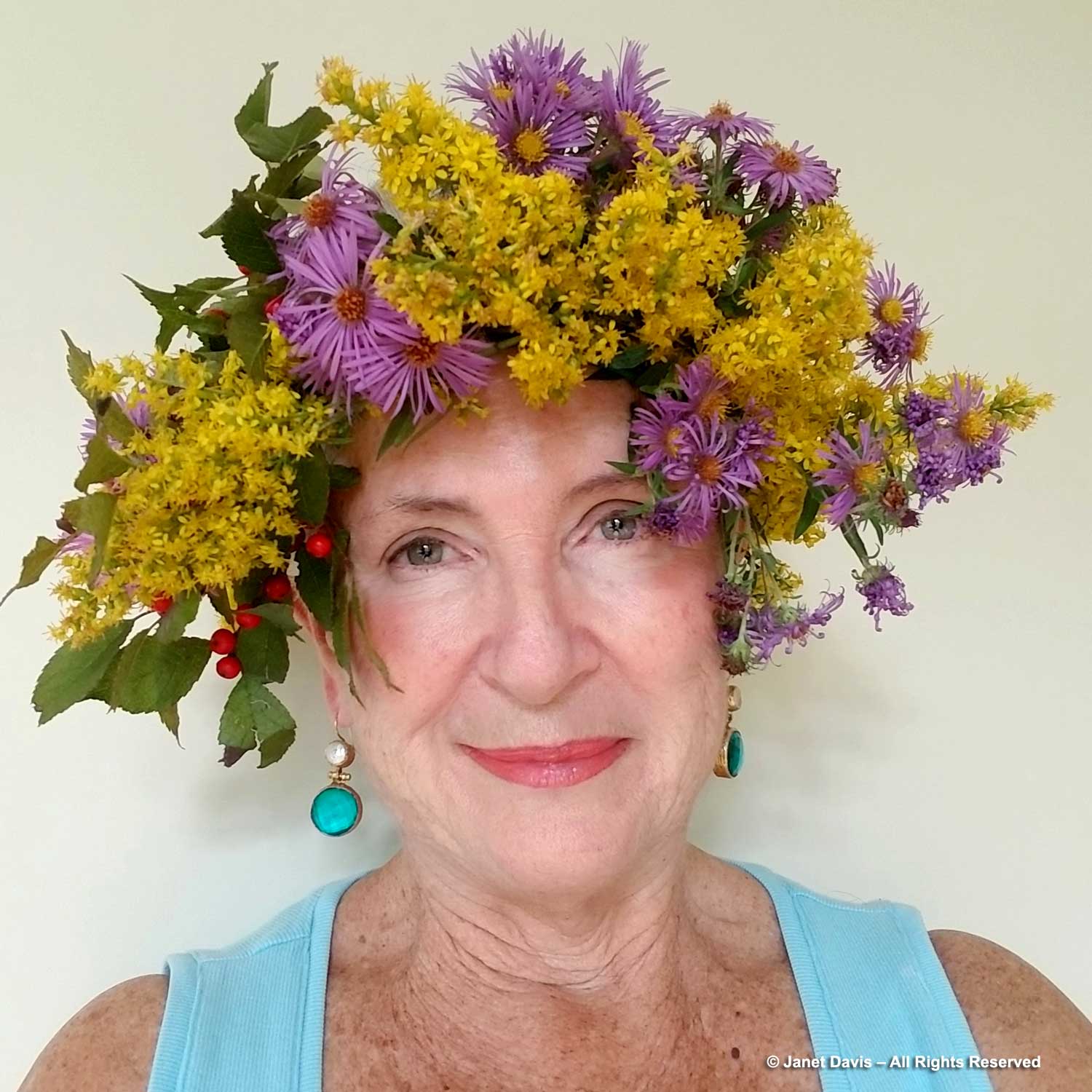
I had some fun with this crown when I sat on the bench on my hillside above the lake. In late September and early October, the bumble bees and assorted other bees and wasps are almost frantically active, sensing, no doubt, that the days are getting cooler and their time is coming to an end. You can see a bumble bee enjoying the crown flowers after I took it off my head.
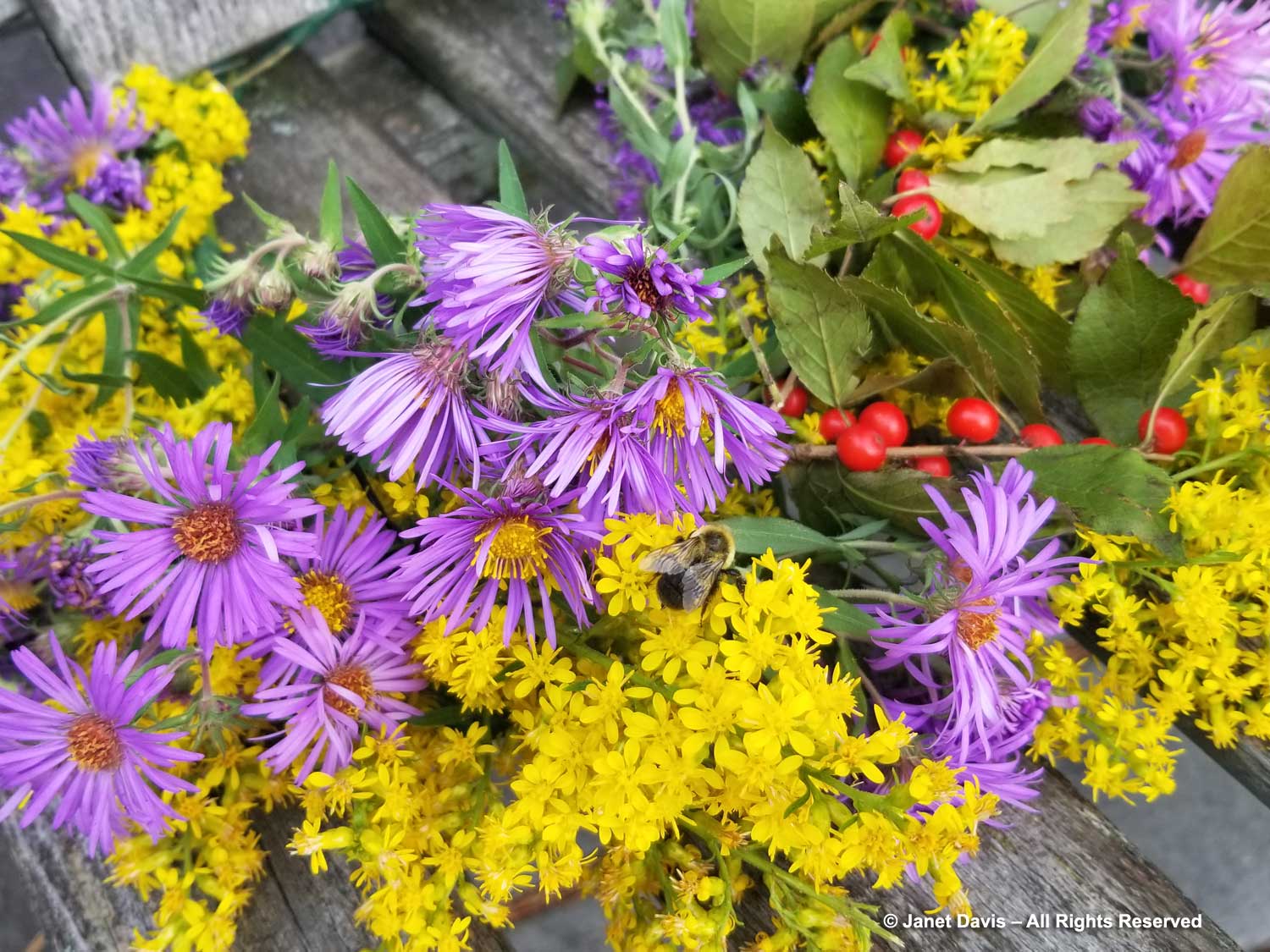
But I also experienced the useful life of a pollinator plant when I sat on the bench wearing my crown and let the bees come to me. Here’s a little video I made.
Most recent findings for showy goldenrod (Solidago speciosa) indicate that the species is native in Ontario to two regions, the “Great Lakes Plains” population is on Walpole Island First Nation at the mouth of the St. Clair River on Lake St. Clair; the other “Boreal” population is near Kenora in northwest Ontario. These distant (1200 km) ecological areas present different morphologies for the species, possibly indicating different varieties. In the U.S., the Department of Natural Resources is reportedly elevating the three known S. speciosa varieties to species rank; at present they are S. speciosa var. speciosa, S. speciosa var. rigidiscula and S. speciosa var. jejunifolia.
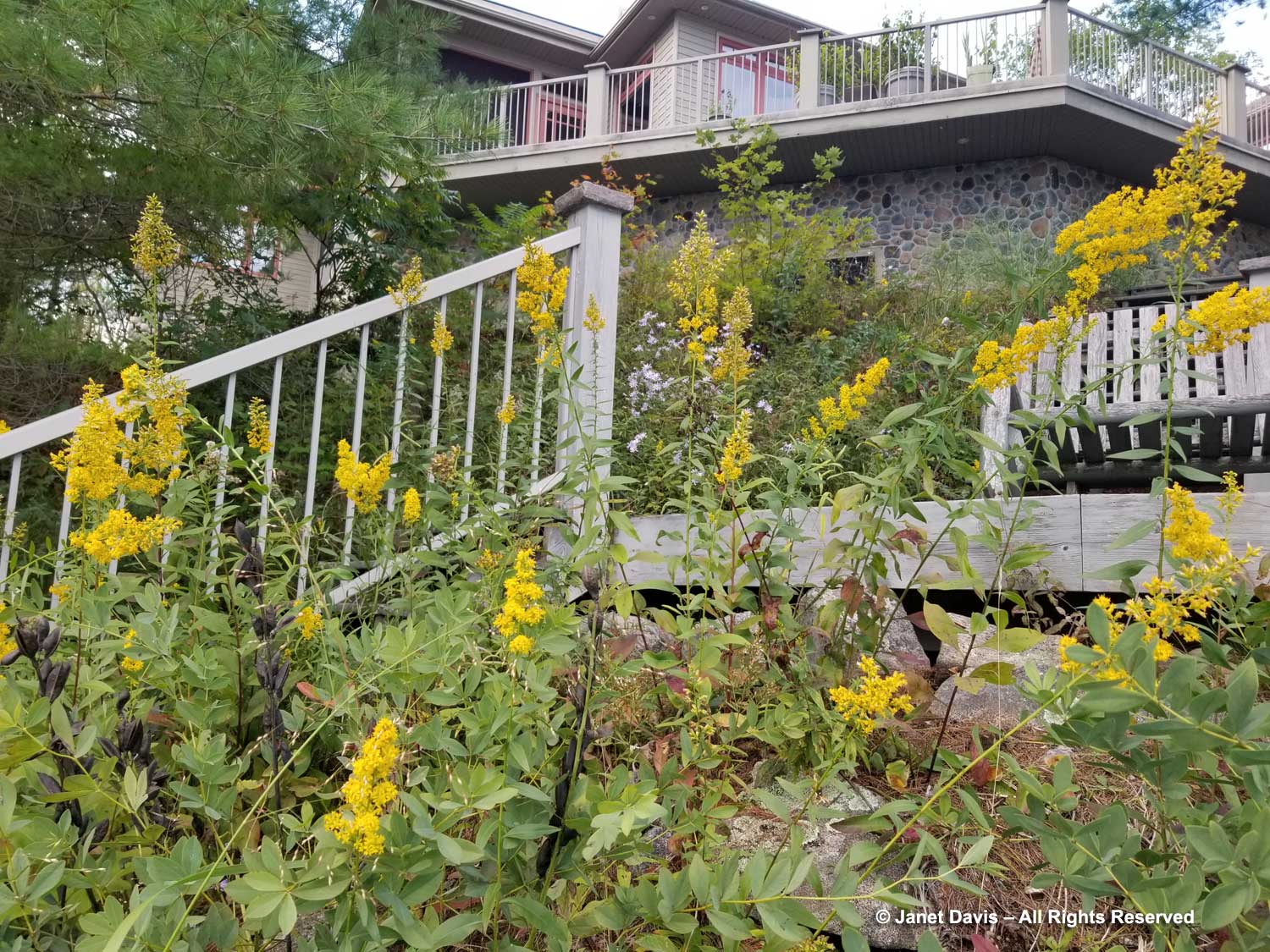
My plants were seed-sown from a Minnesota source more than 15 years ago and are very hardy; while spreading somewhat aggressively, they do not colonize via rhizomes like Canada goldenrod so are fairly easy to pull out if they become too happy. I have praised this plant in my blog before – see Sparing the ‘Rod, Spoiling the Bees.
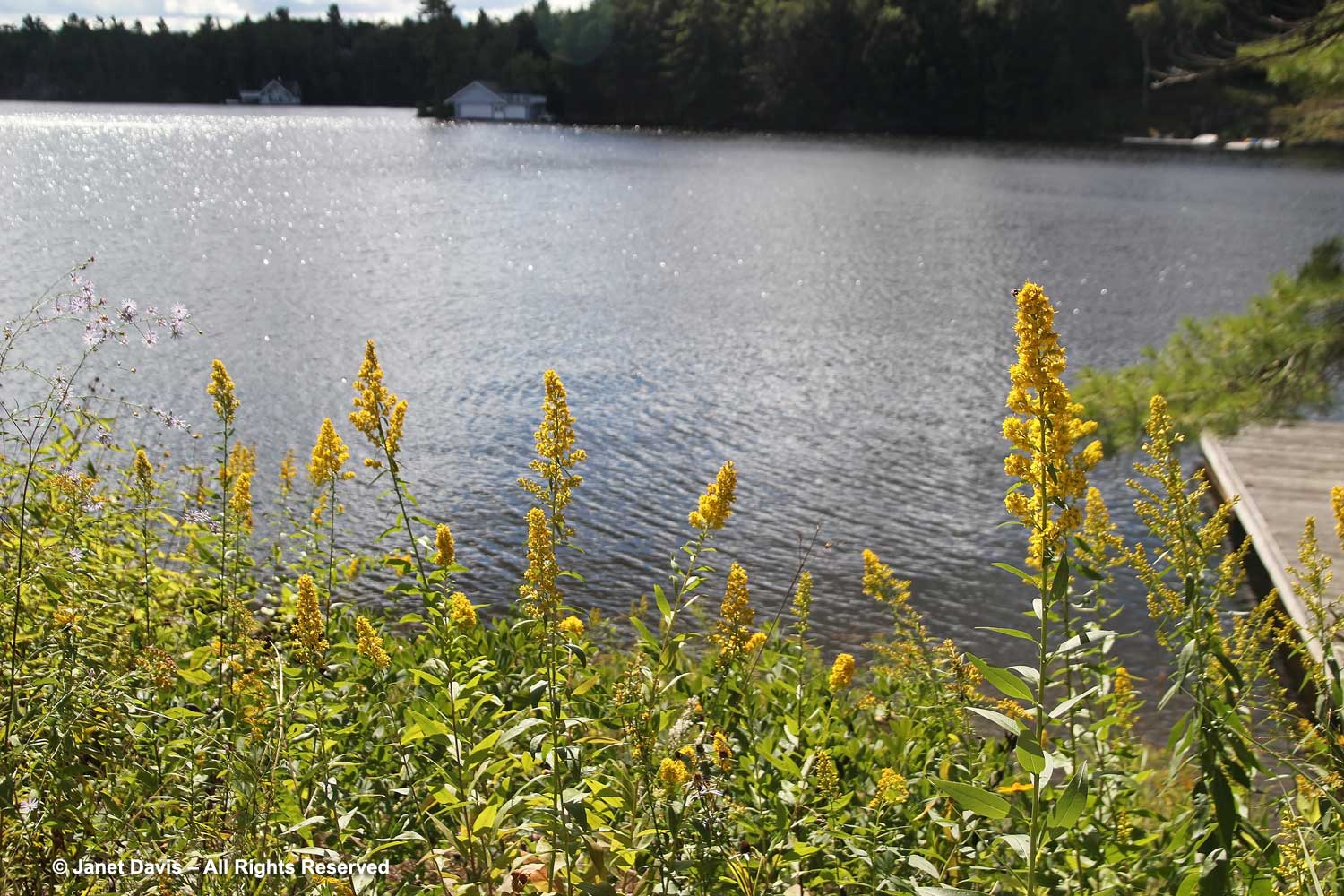
Most important for me is their late flowering season and their large inflorescence, a boon for the butterflies…
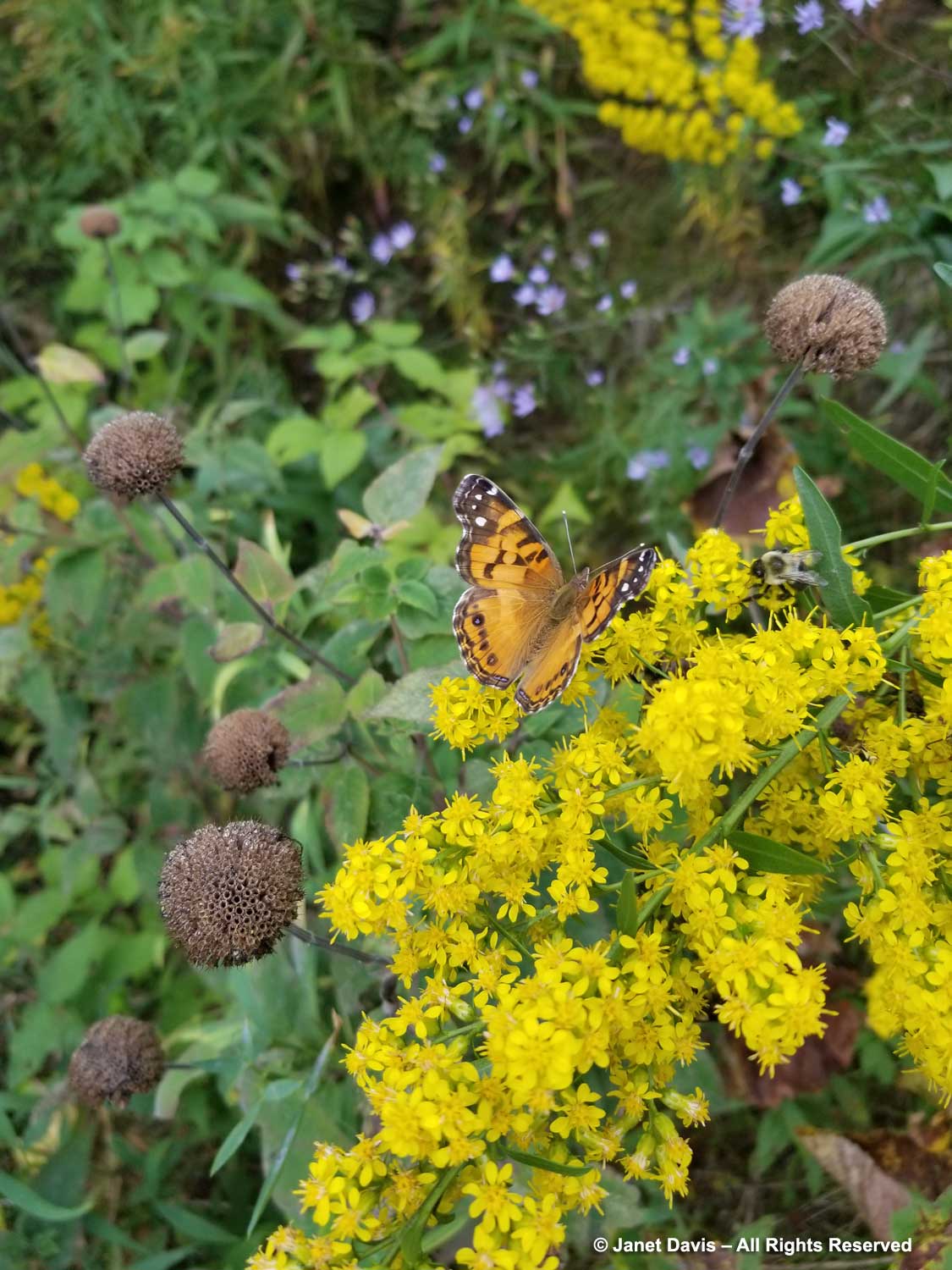
…. and, especially, my bumble bees after most of the other meadow perennials have gone to seed.
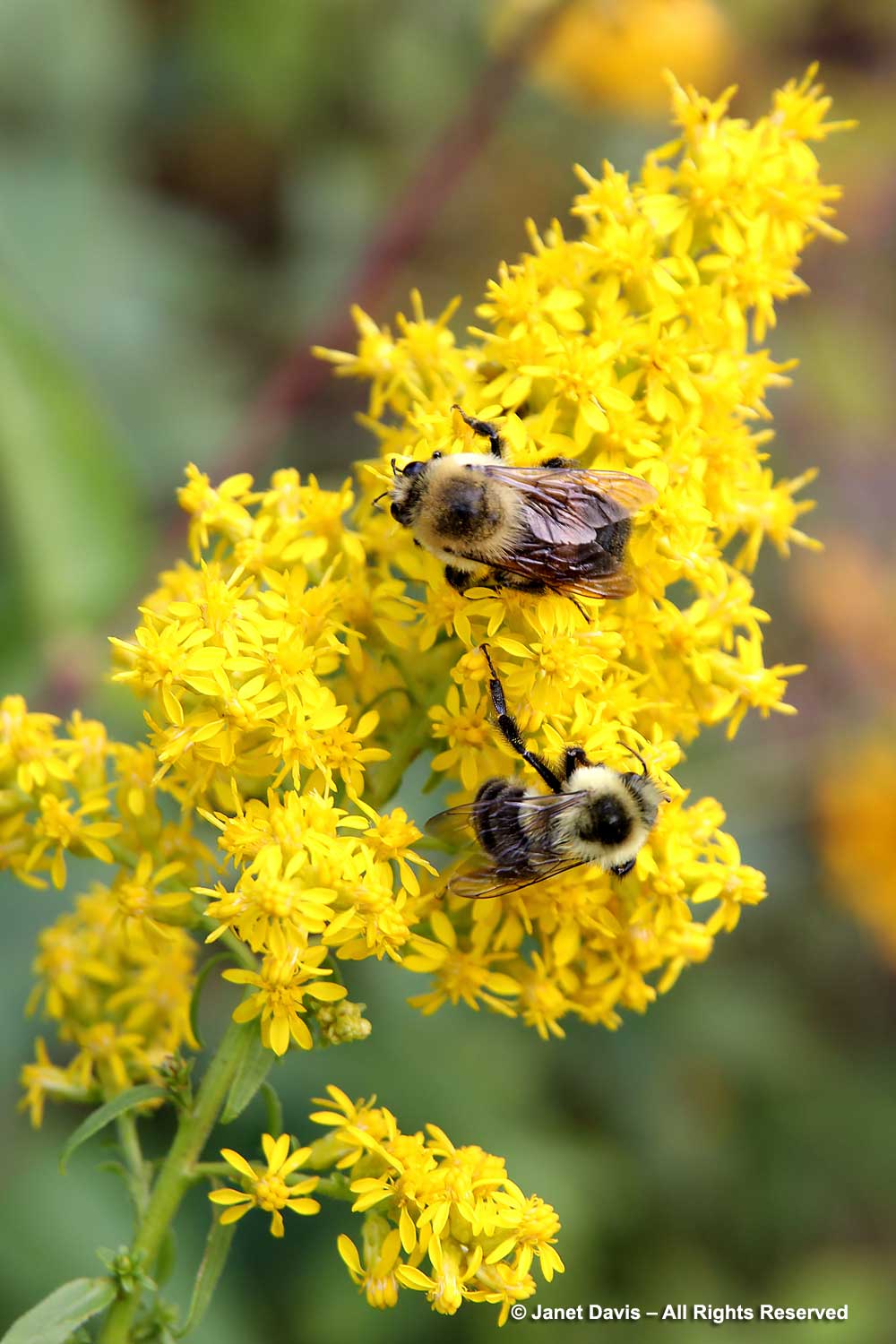
Two native aster species flower in succession in early autumn. Below is smooth aster (Symphyotrichum laeve) flowering alongside showy goldenrod in my west meadow. It’s a little willowy and fragile-looking compared to….
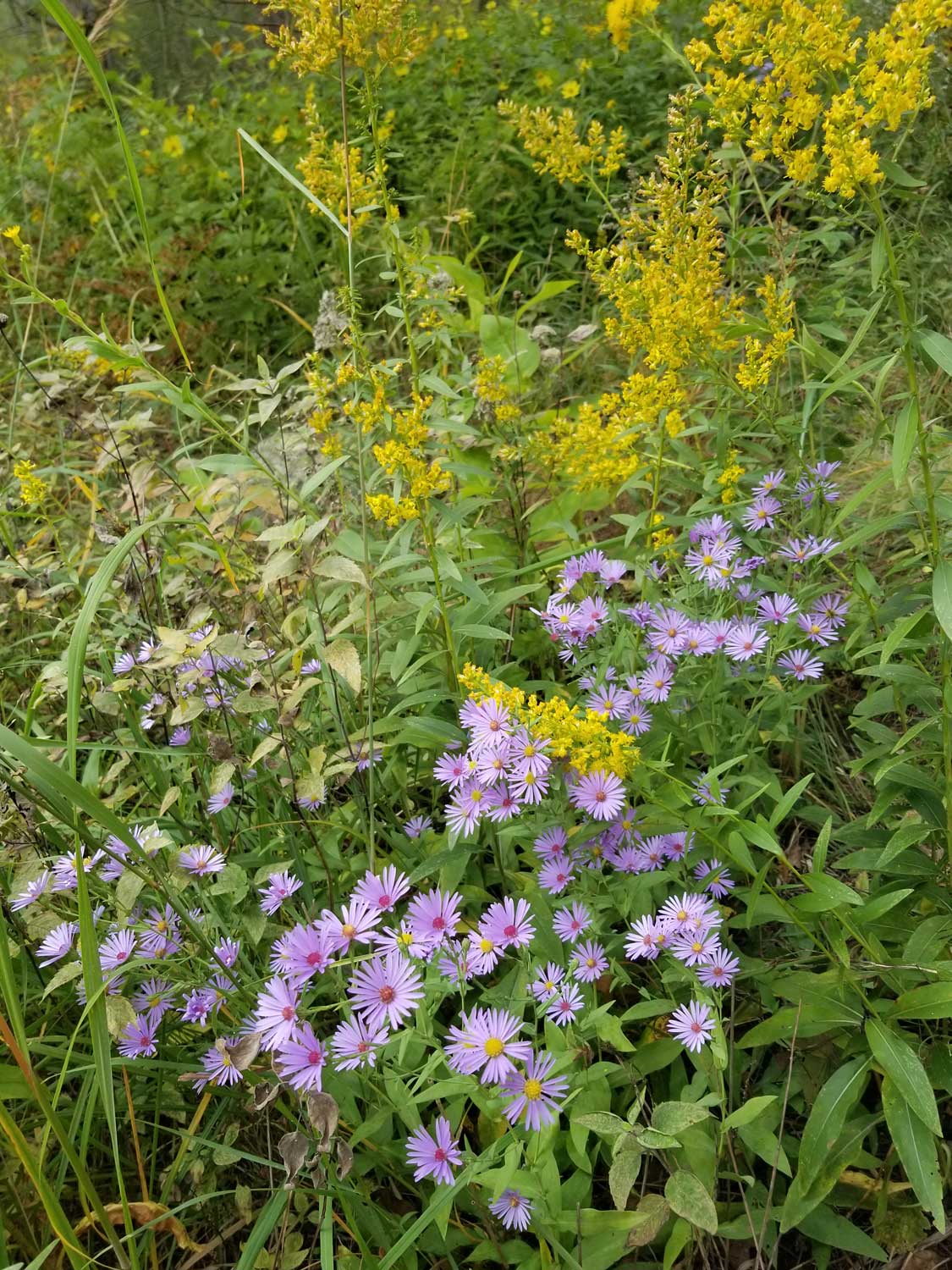
….. New England aster (Symphyotrichum novae-angliae) with showy goldenrod, Indian grass (Sorghastrum nutans) and big bluestem (Andropogon gerardii) in the west meadow. That’s the seedhead of Culver’s root (Veronicastrum virginicum) at lower right.
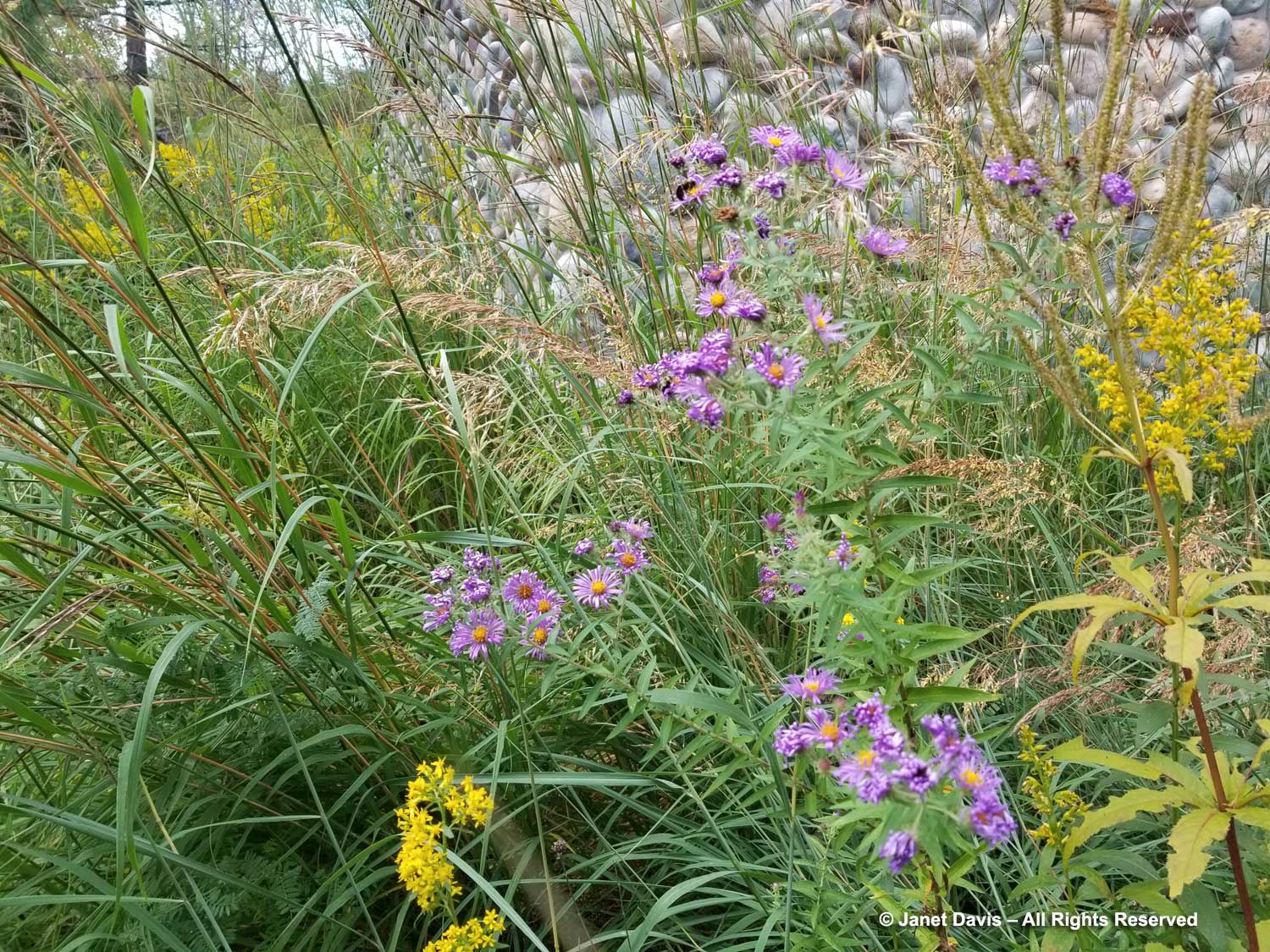
New England aster has a common rich-purple form, shown below being foraged by a tri-coloured bumble bee (Bombus ternarius).
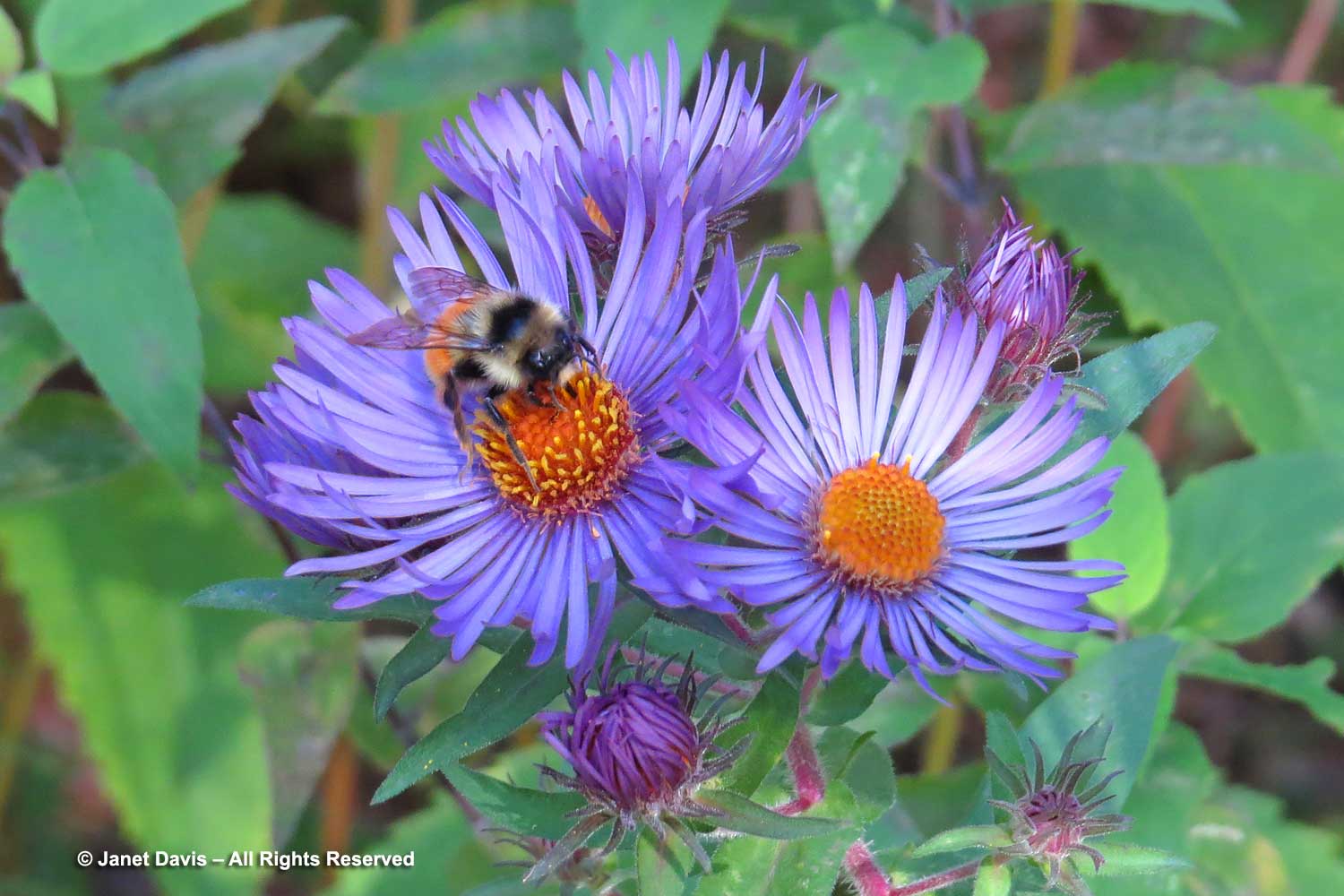
It also has a distinct mauve-pink form, below, the one below featuring the common Eastern bumble bee (Bombus impatiens).
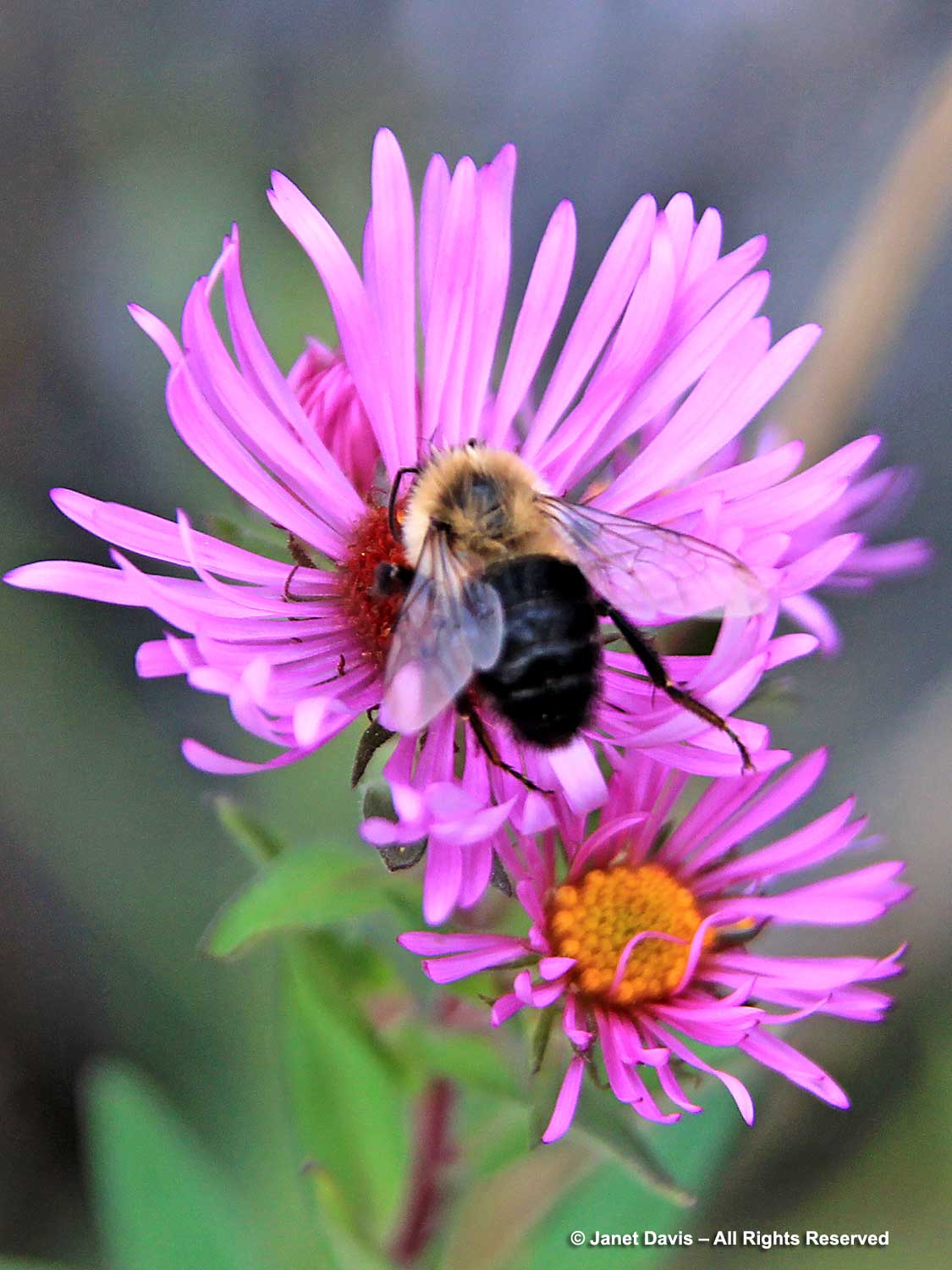
Winterberry (Ilex verticillata) is widespread in damp and boggy settings in Muskoka. It grows at the shore of the cottage and the fruits last into winter, until they’re eaten by hungry birds.
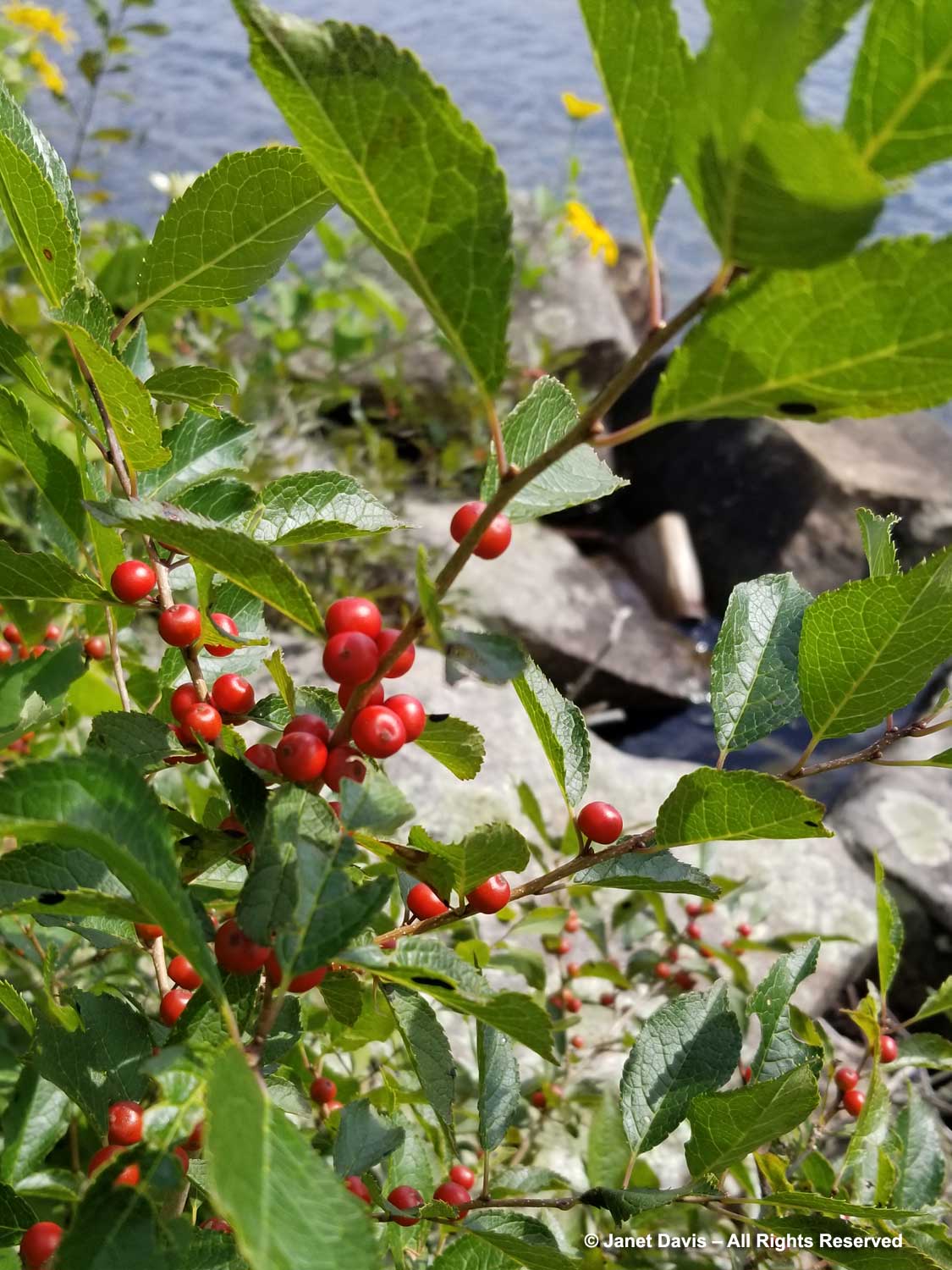
I made a second video for this time at the cottage, featuring some of the plants above:
By early October, the leaves of the red maples (Acer rubrum), so plentiful in Muskoka, have started transforming to shades of orange and red – and some yellow. This is one on our property which I selected to ‘keep’ (since I could have hundreds, given the number of seedlings that arise.)
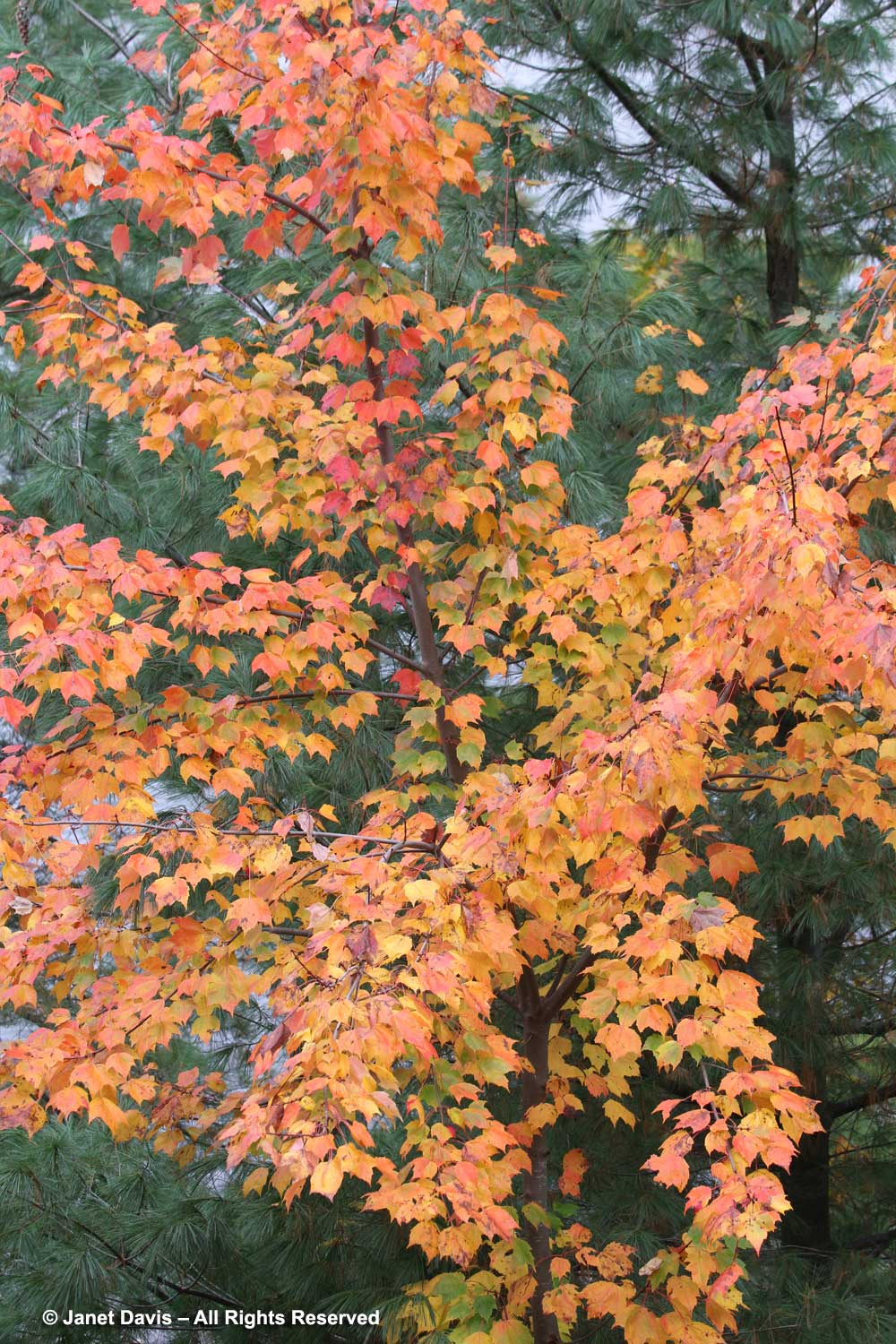
It is visible framed through a cottage window beyond my “nature lamp”.
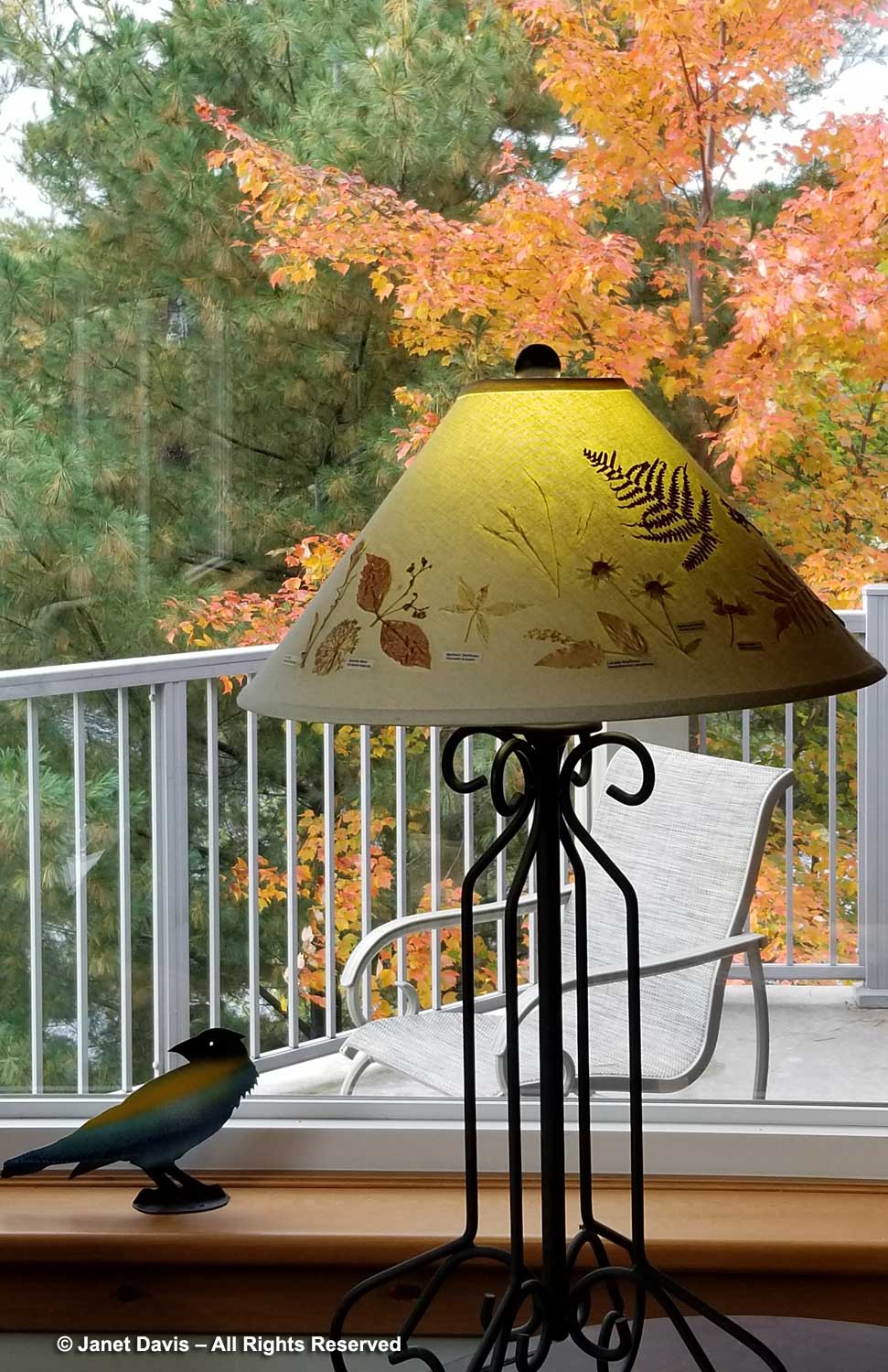
This weekend, of course, is Thanksgiving in Canada. It more accurately represents our harvest time in our northern latitude than the late November date south of the border. And Thanksgiving means PIES! My grandchildren take an active role in pie-making, including cutting slices for the apple pie….
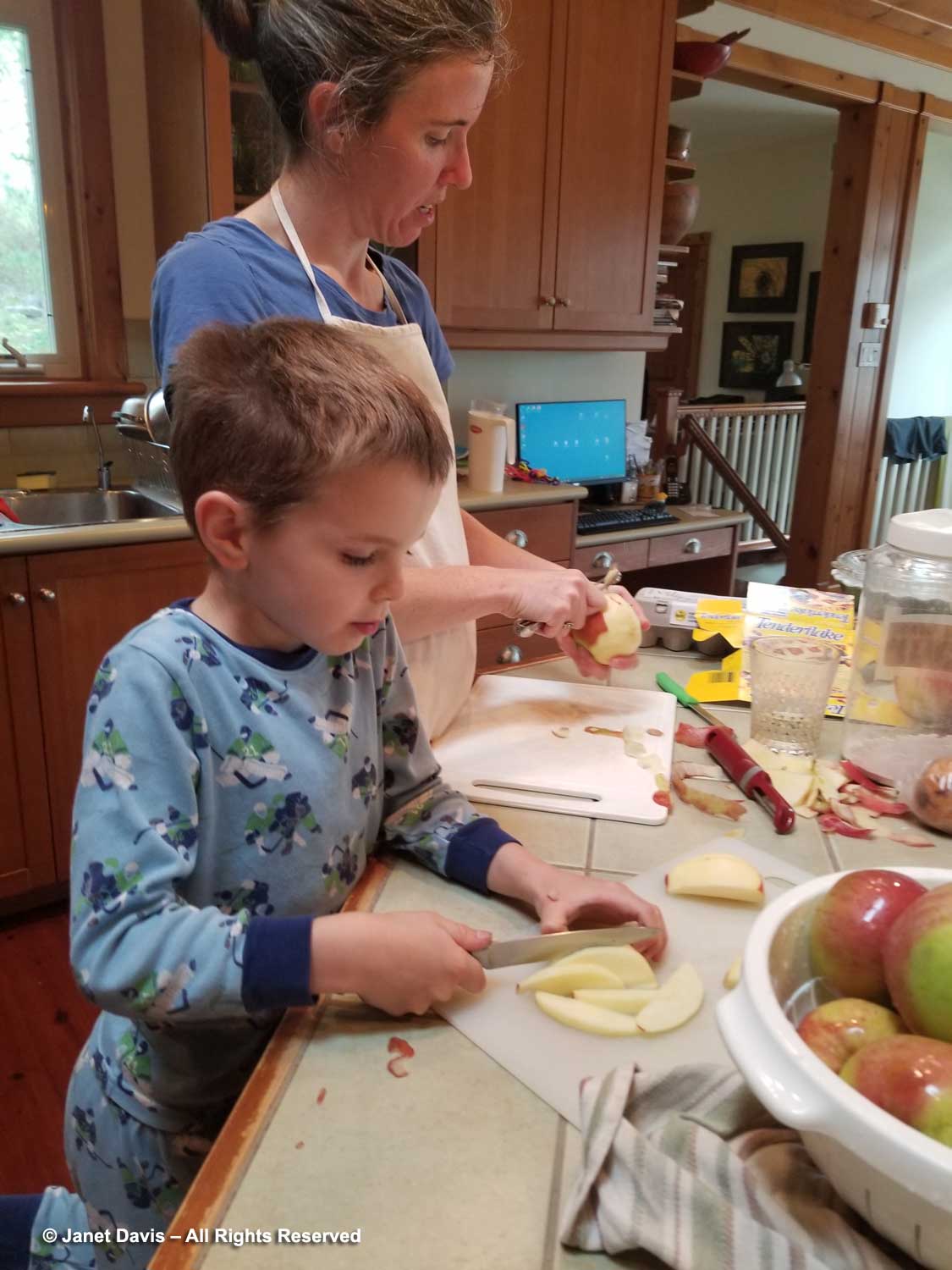
….. and making sour cream cobwebs on the pumpkin pie.
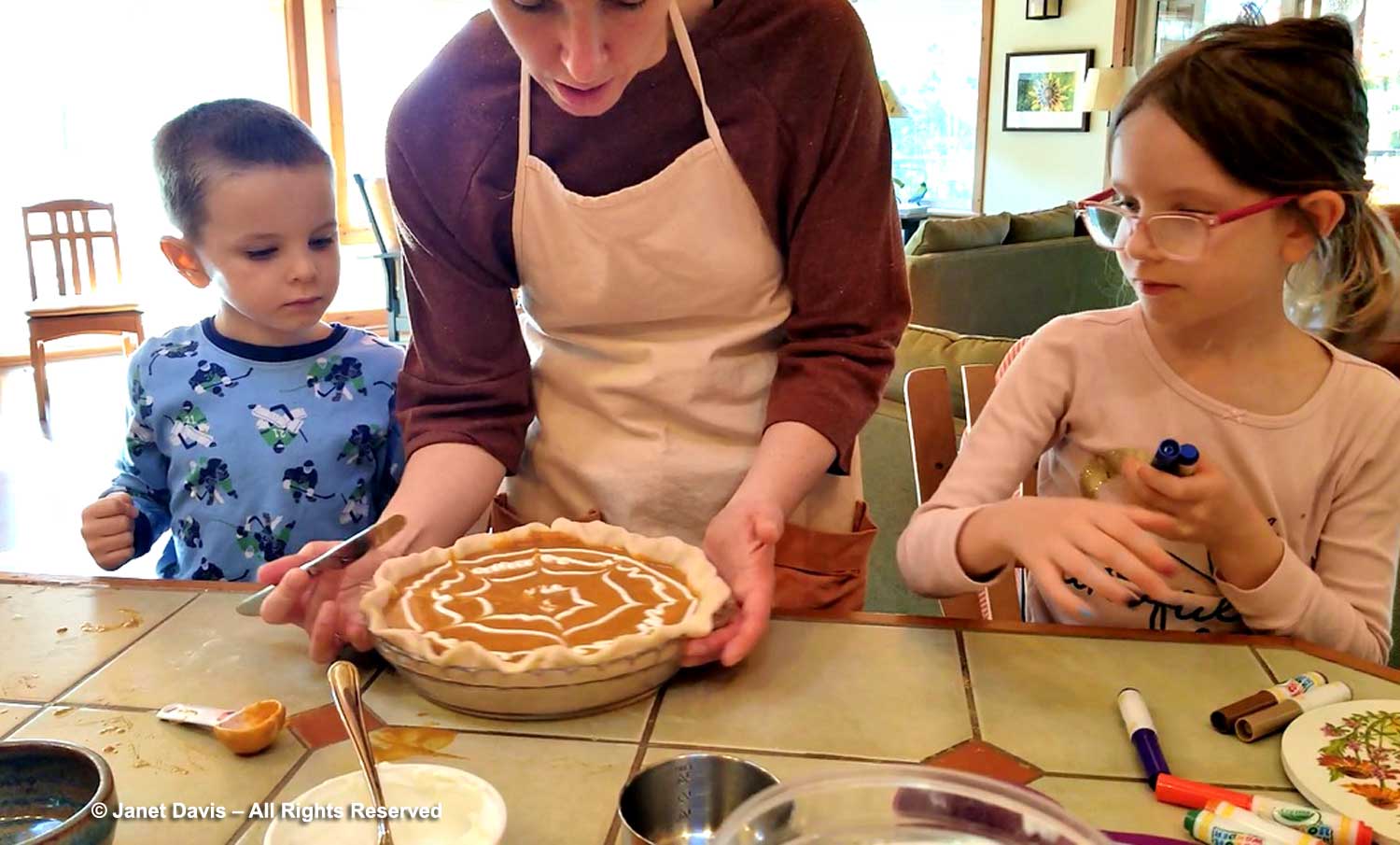
The table is set for Thanksgiving dinner, usually with extended family from our bay…
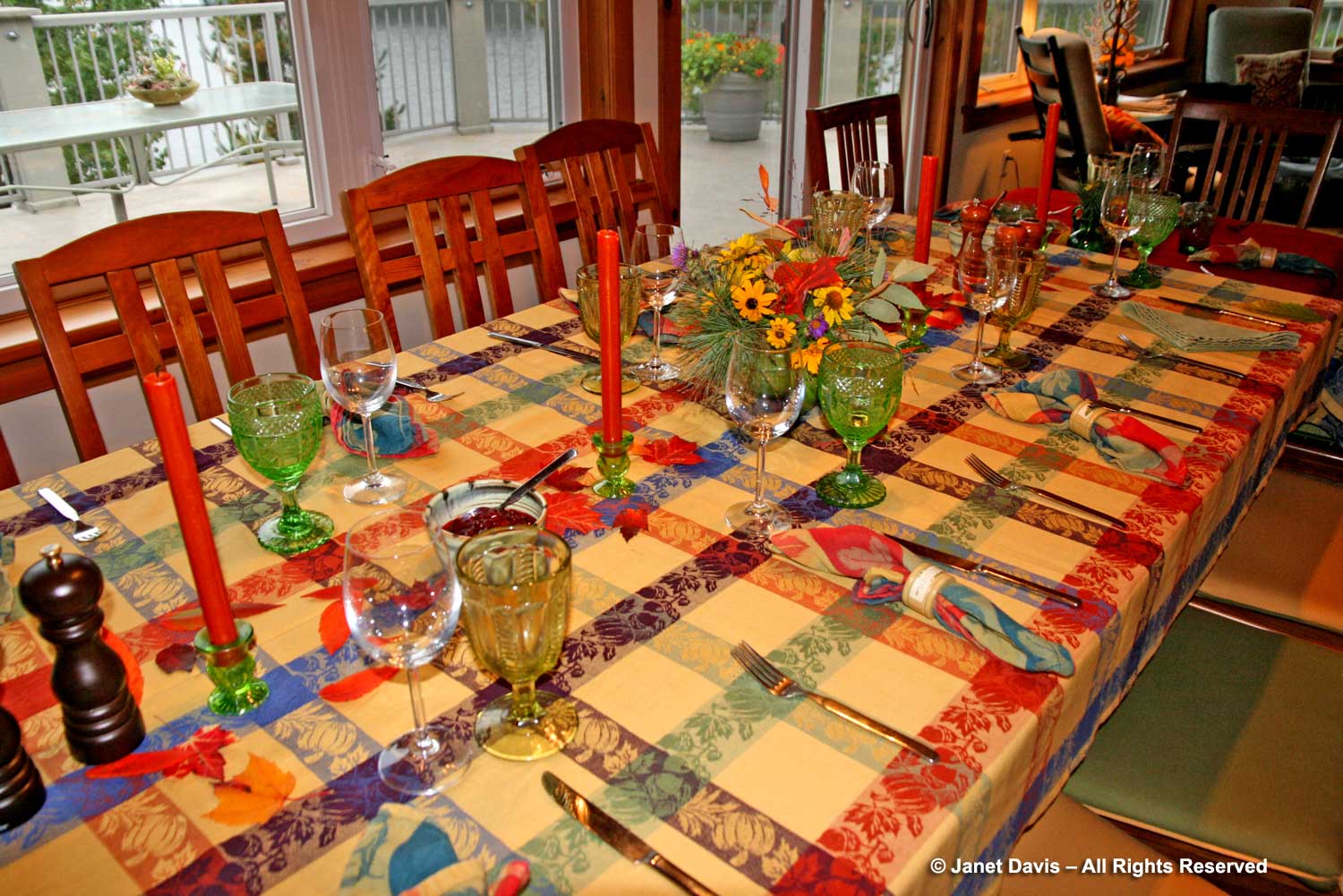
…. and a centrepiece bouquet with flowers cut from the meadows. A few Helianthus ‘Lemon Queen’ and Rudbeckia subtomentosa are usually still in bloom to add to the goldenrod and asters.
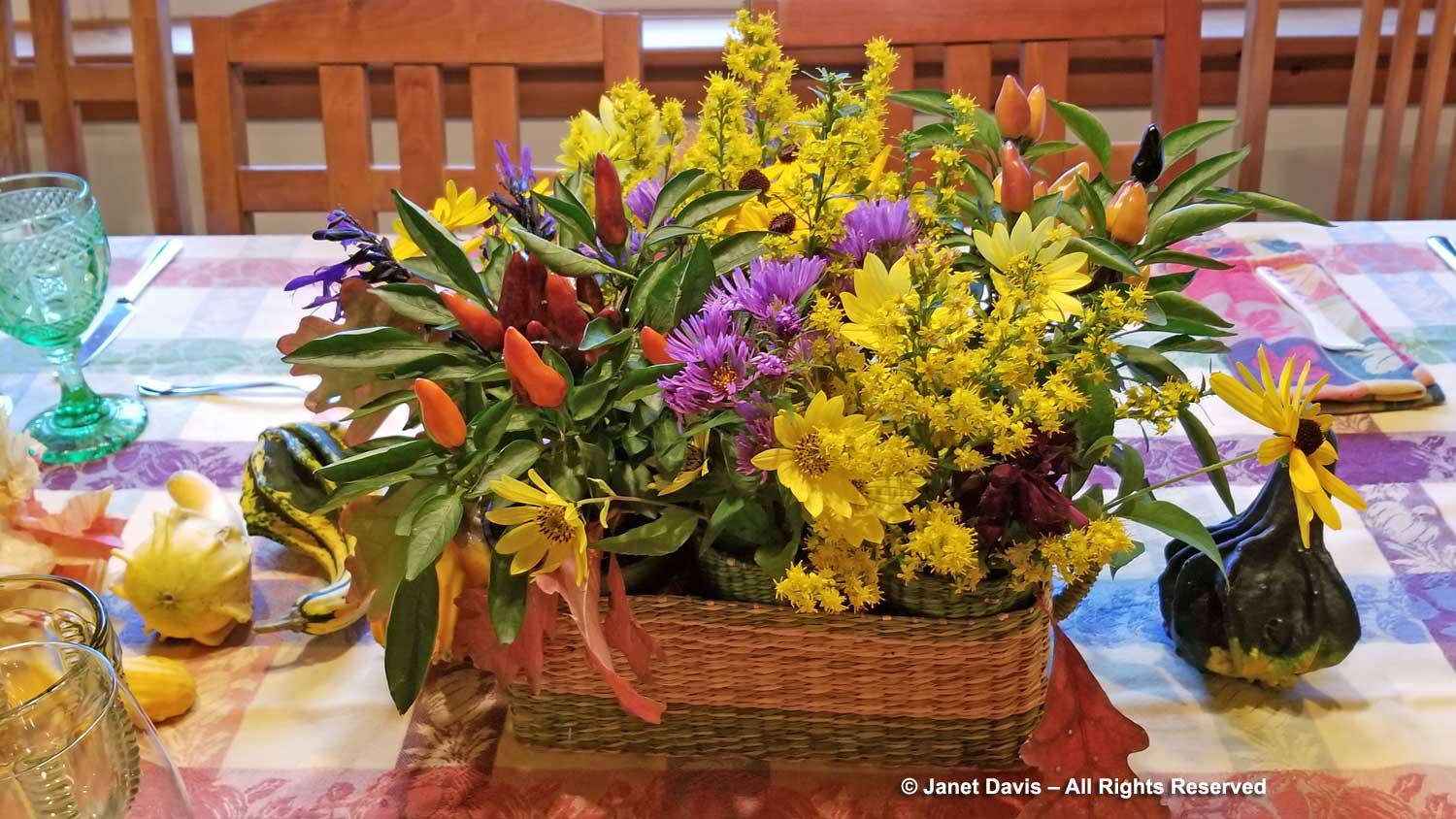
Turkey, mashed potatoes, dressing, green beans and sweet potatoes, with the relatives sharing vegetable offerings at our casual buffet.
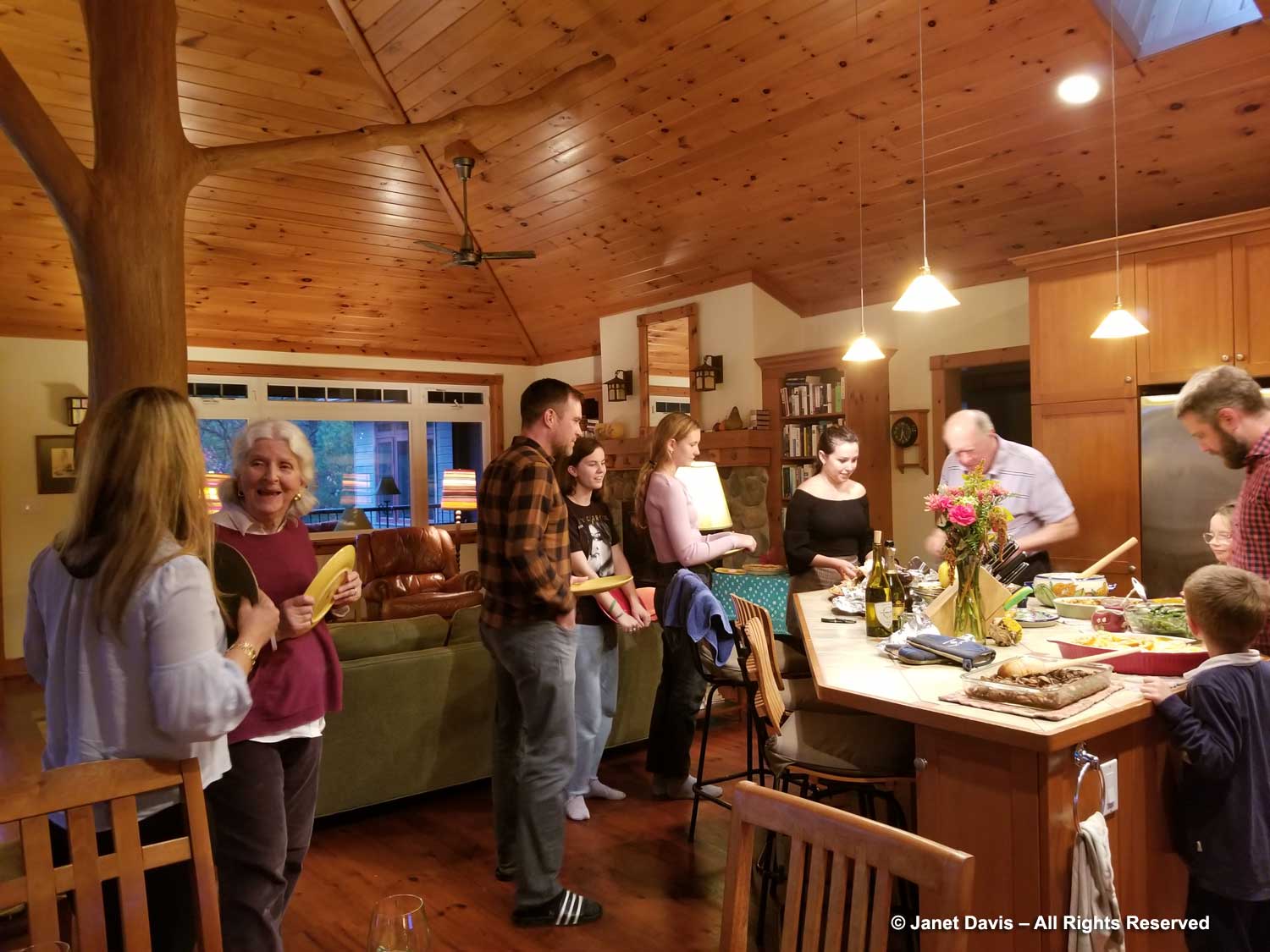
Those pies appear for dessert, and though you’re really much too full… somehow “a tiny slice of each” is a familiar refrain.
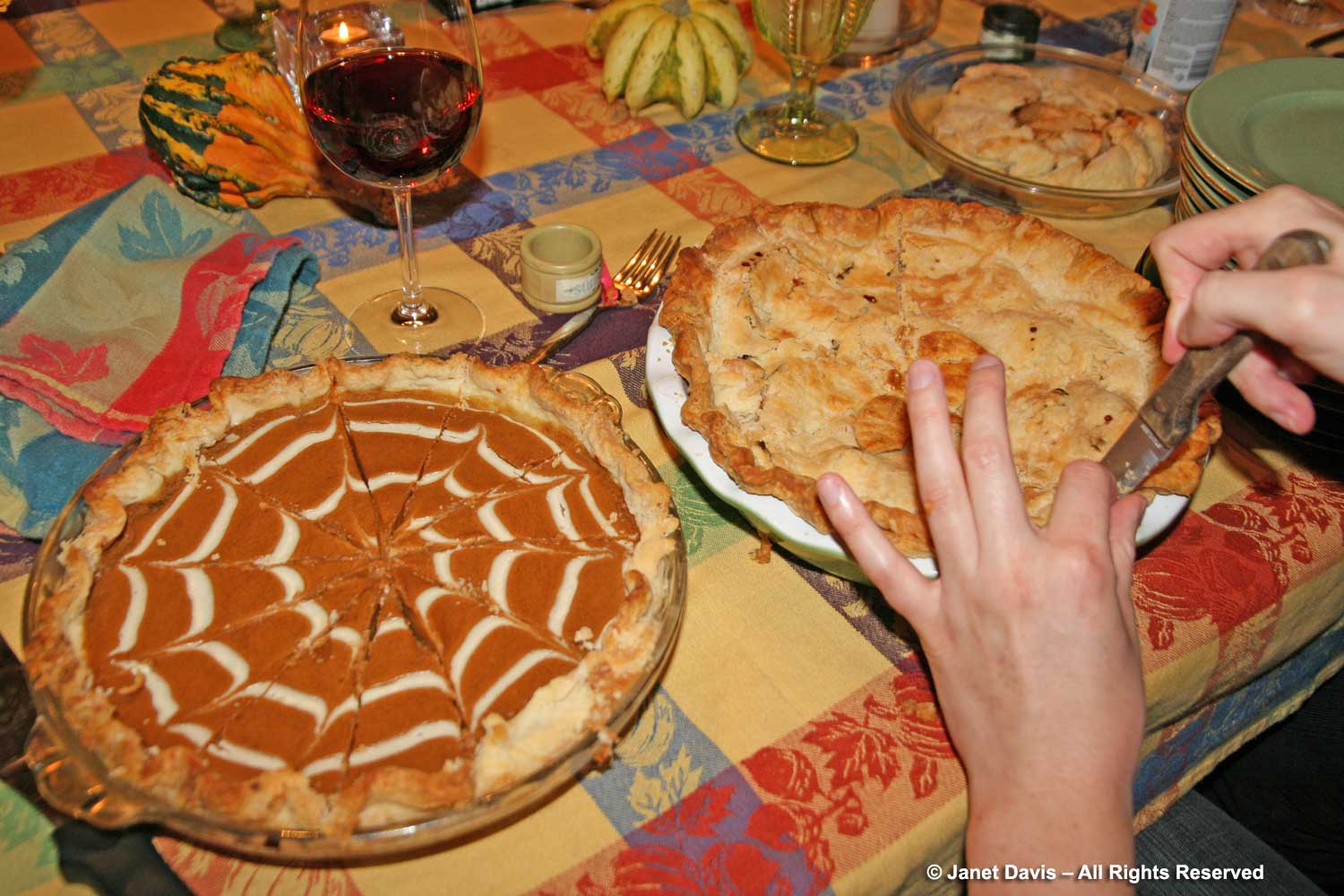
The next day sometimes features turkey noodle soup for the freezer. Then it’s out for an autumn hike …..
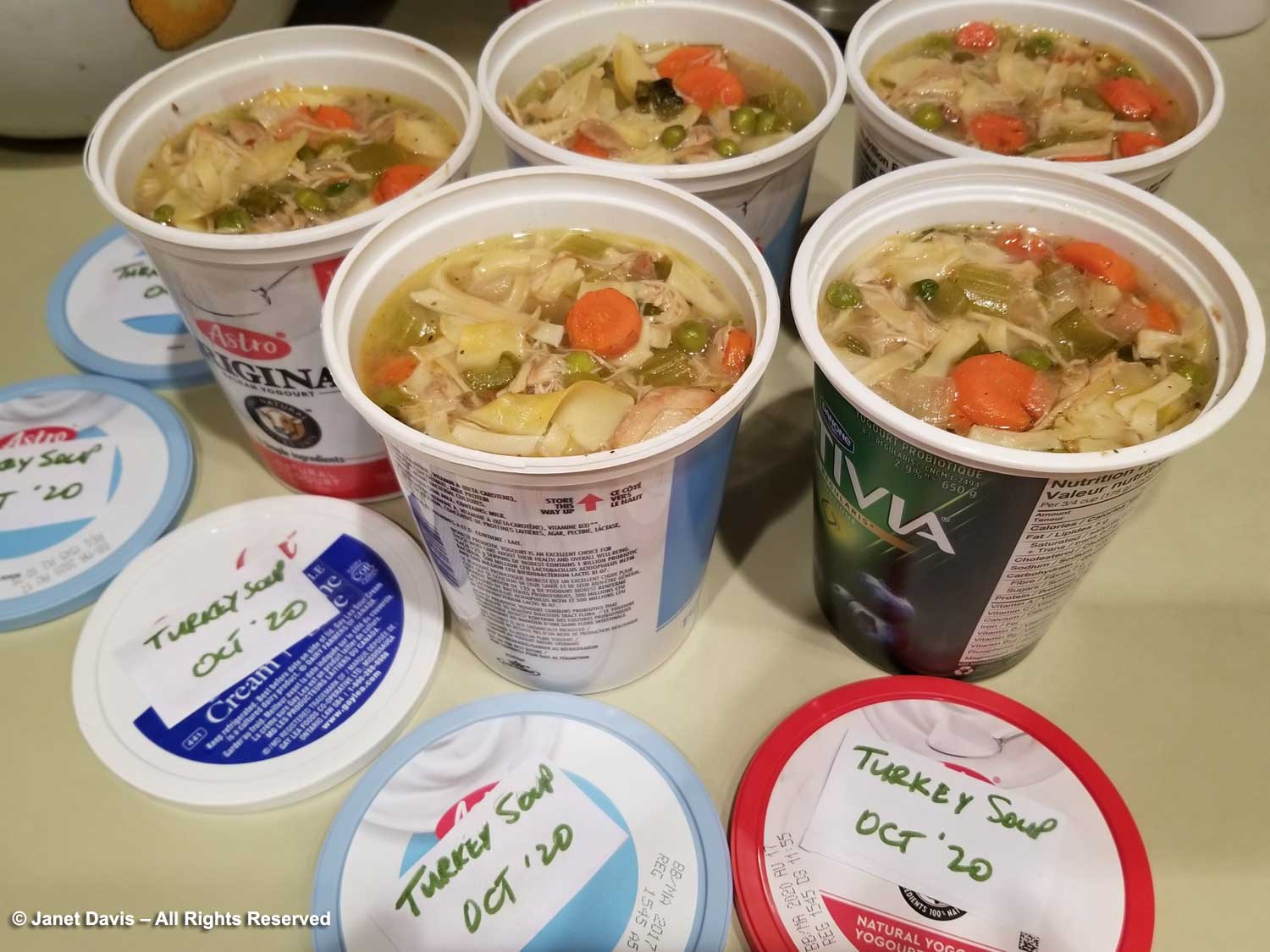
…. through the forest behind our cottages.
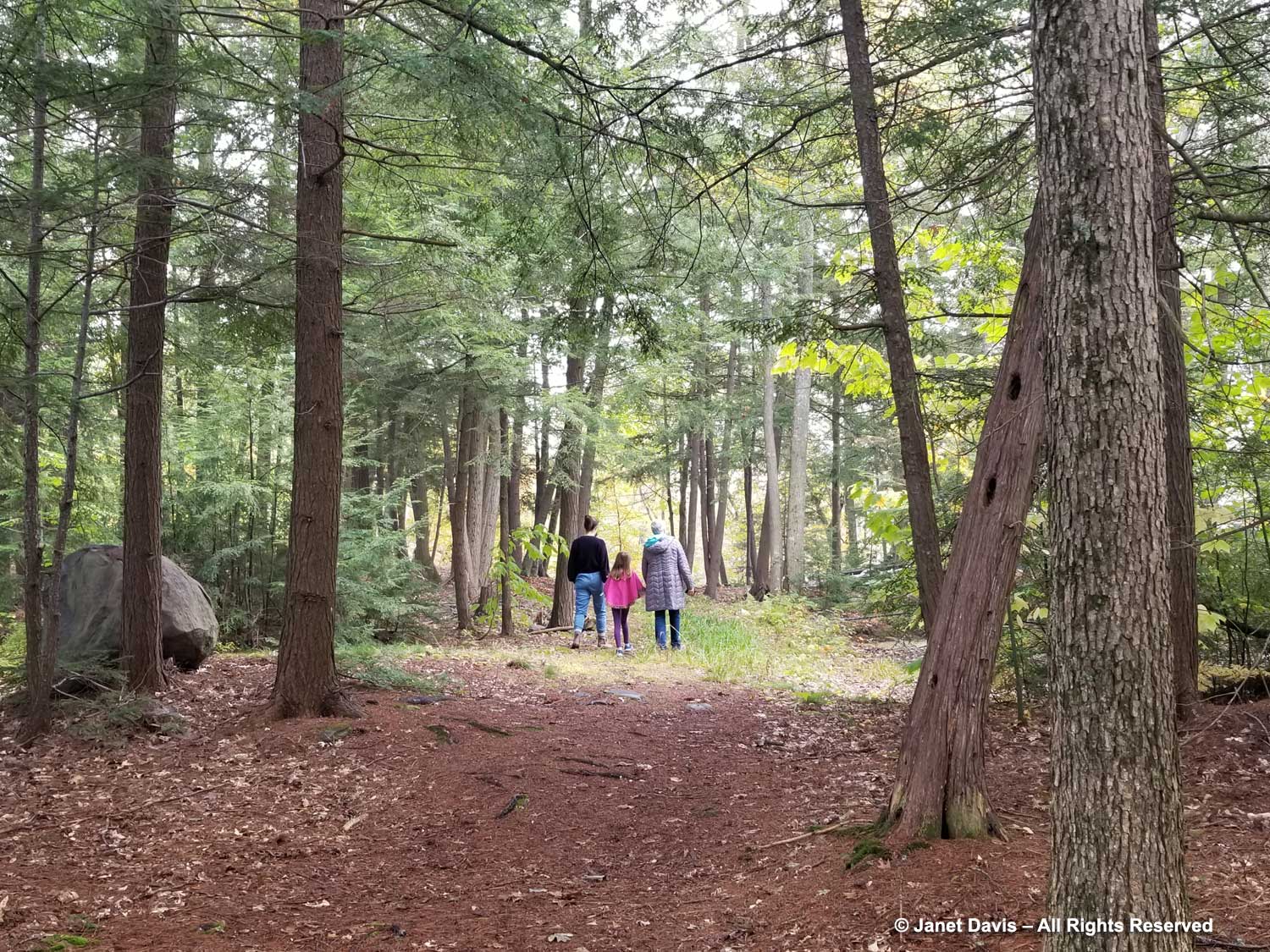
There are many diversions for the grandkids….
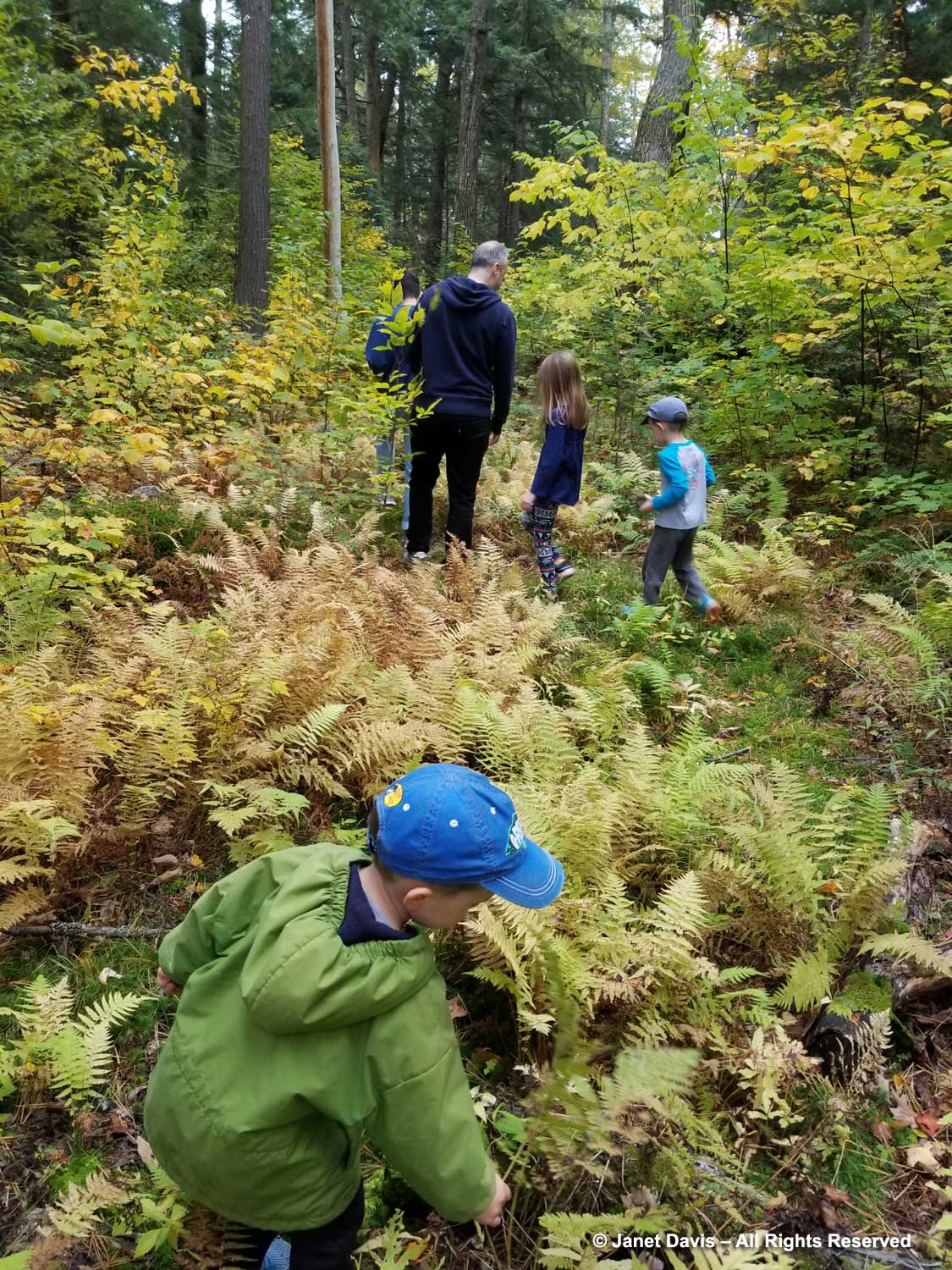
…. and lots of eye-catching mushrooms to photograph. Sadly, this is a downed American beech tree (Fagus grandifolia), a species currently under attack from beech bark disease.
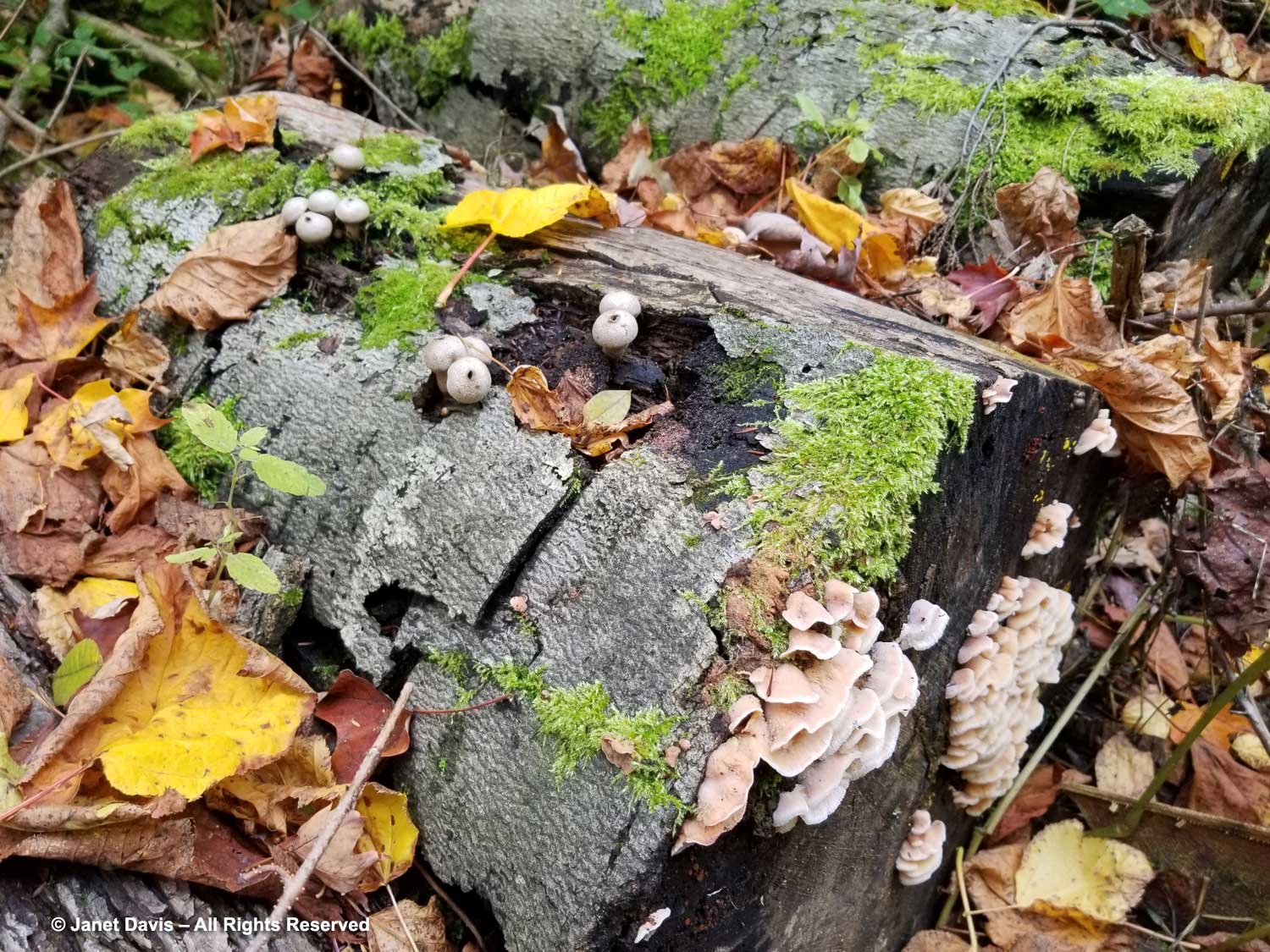
It’s important to know the exact species of mushroom before gathering for cooking. You would not want to eat Amanita muscaria var. guessowii or American yellow fly agaric, for example, since it is toxic (and dangerously psychoactive, though not a psilocybin ‘magic mushroom’).
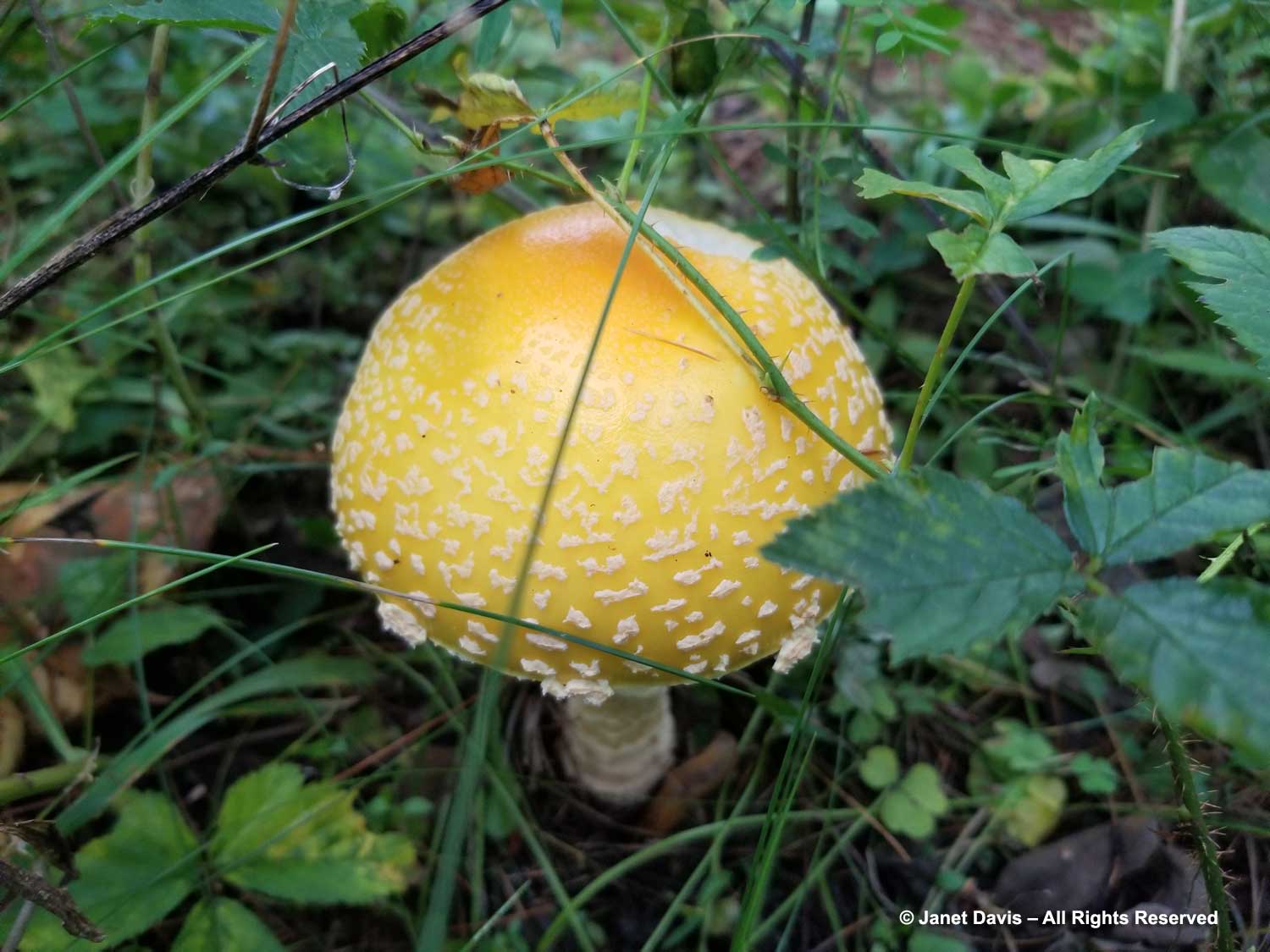
I was fascinated with the pale purple colour of this wood blewit (Clitocybe nuda) growing under white pines and paper birches on our shore – though mushrooms can be any colour.
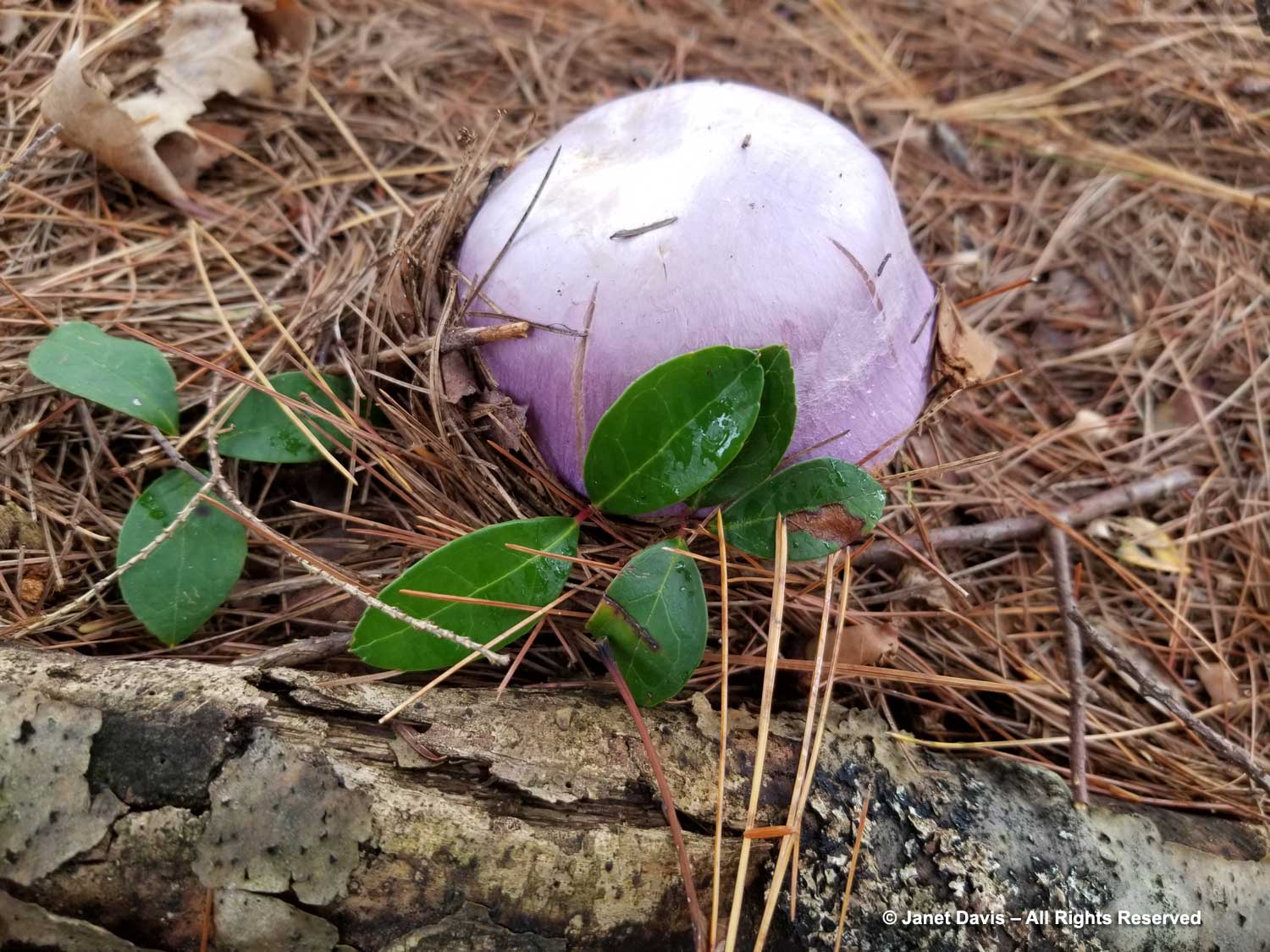
But it is the spectacular colours of the autumn canopy of our northern mixed forests that thrills us – the visual reward before our long, white winter on the Muskoka section of the Precambrian Shield.
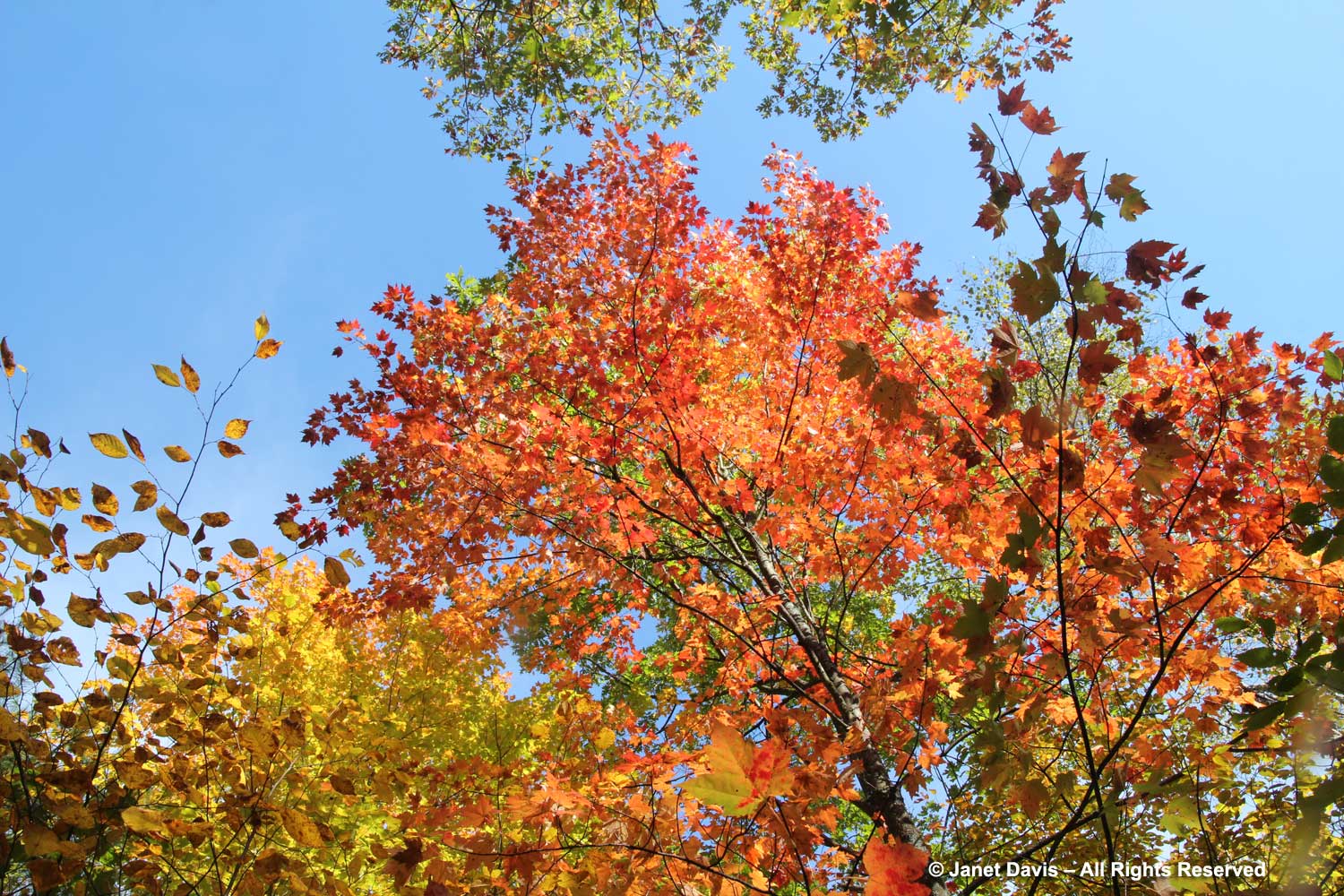
********
This fairy crown is the 24th in a long line of Tinker Bell crowns. Here are links to the previous ones.
#1 – Spring Awakening
#2 – Little Blossoms for Easter
#3 – The Perfume of Hyacinths
#4 – Spring Bulb Extravaganza
#5 – A Crabapple Requiem
#6 – Shady Lady
#7 – Columbines & Wild Strawberries on Lake Muskoka
#8 – Lilac, Dogwood & Alliums
#9 – Borrowed Scenery & an Azalea for Mom
#10 – June Blues on Lake Muskoka
#11 – Sage & Catmint for the Bees
#12 – Penstemons & Coreopsis in Muskoka
#13 – Ditch Lilies & Serviceberries
#14 – Golden Yarrow & Orange Milkweed
#15 – Echinacea & Clematis
#16 – A Czech-German-All American Blackeyed Susan
#17- Beebalm & Yellow Daisies at the Lake
#18- Russian Sage & Blazing Stars
#19-My Fruitful Life
#20-Cup Plant, Joe Pye & Ironweed
#21-Helianthus & Hummingbirds#22-Grasses, Asters & Goldenrod
#23-Sedums, Pass-Along Plants & Fruit for the Birds

Lovely post, Janet. Happy Thanksgiving to you and your family.
Fall color (and fall flowers) are much further along here in Eastern Quebec. Turtlehead and Rudbeckia seem to be the final ones, along with a few late elderberries and chamomile.
But the forest ridges here are beautiful with yellows and reds, and the snow geese are traveling through – beautiful.
Lisa… thank you. I wonder, does it feel like you’re part of Canadian Thanksgiving after your many years here?